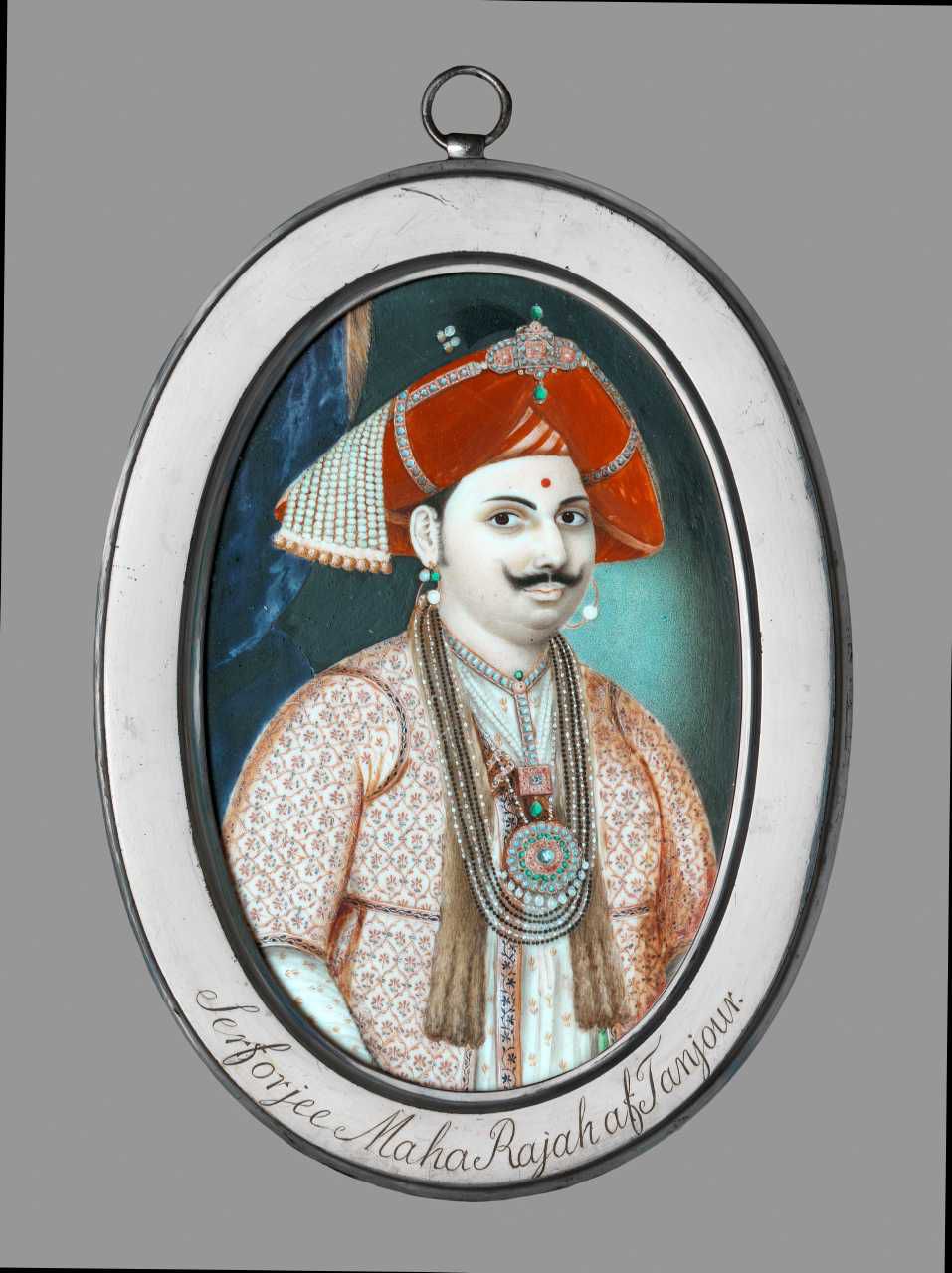
King Serfoji II (1777-1832) of Thanjavur/Tanjore
Serfoji II (1777-1832) of Thanjavur. This portrait was given to the ambassadors sent to Thanjavur in 1800 from Tranquebar (among them Colonel Mühldorff). They received it as a gift meant for the crown prince of Denmark, who later became King Frederick VI. A portrait of the crown prince was given in exchange to Serfoji II. Miniature painting on ivory, silver frame with engraving. Unknown Indian artist, c. 1800, 18,5 cm high.
King Serfoji II was installed as ruler of Thanjavur in 1798 by the British. Right from the very beginning of the Danish era in Tranquebar in the 1620s royal portraits were recognised as being useful instruments in the political and social negotiations with allies. The interest in naturalistic portraiture developed at the court of Thanjavur, especially during the reign of Serfoji II. The presence of both European artists and Indian artists trained in European techniques made the growth of new forms of portraiture possible especially in the late eighteenth century. This is clearly seen in the hybrid style of miniature paintings known as company paintings In addition to his deep insight into Indian knowledge systems Serfoji II also showed an extensive interest in European art and science. During his reign royal paintings were displayed in his Thanjavur palace, for instance in the Durbar Halls.⁶ They were also used as gifts in the courtly culture of gift exchange, in which the Europeans also participated.
Text: Laura B. Nilsson, Louise Sebro, Esther Fihl & Agnes Lydiksen
Read more: Nilsson, Laura Berivan. (2015). “Picturing the unknown. Cultural Encounters and Visual Representations in Company Paintings from the eighteenth and nineteenth centuries in south Indian collections of the National Museum of Denmark”, Tranquebar Initiativets Skriftserie, no. 11. National Museum of Denmark.
en.natmus.dk/fileadmin/user_upload/natmus/forskning/dokumenter/Tranquebar/Skriftserie/Skriftserie_11.pdf